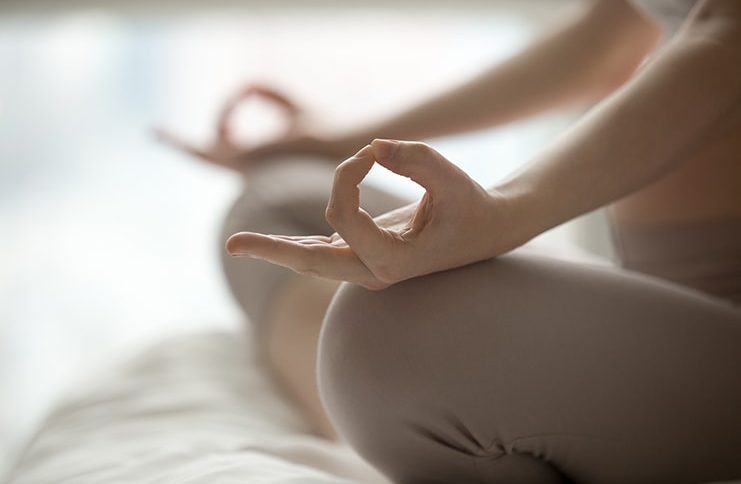
When you are dealing with infertility, you may get the advice: “Don’t stress about it and you’ll get pregnant.” Of course, it’s not so simple. Exploring the ancient Indian practice of ayurveda is one path; it can take time and work, but may help you stress less, and on a larger level may also improve your health in a holistic way, which may then help you conceive.
What Is Ayurveda?
Ayurveda, the science of life or nature in Sanskrit is a system of mind, body, and spiritual healing and maintenance that originated in India and has been practiced for 5,000 years. It was introduced in the United States in the 1970s and has grown in popularity as an alternative or complementary therapy for many disorders, including infertility. In truth, ayurvedic treatment doesn’t target specific symptoms like conception complications, but aims to reboot the whole system, resolving any issues that have flared up.
In ayurvedic medicine, every person’s prakriti or body constitution (body type) is different, with a unique balance of the three doshas or nature energies:
Vata (air+space/wind energy): controls movements and nerve impulses
Pitta (fire+water/sun energy): controls the metabolic and digestive functions and body temperature
Kapha (water+earth/moon energy): controls body tissue development, maintenance, and system lubrication
How Do Ayurvedic Consultations and Treatment Work?
When a practitioner examines you she will assess the balance of the doshas and how to help you achieve better physical, mental, and emotional health. A first consultation will usually last 90 minutes.
Vaijayanti Apte (“Jay” or “Dr. Jay” to clients), director of Jay’s Ayurveda and Panchakarma Center in Mountain Valley, California, and a practitioner with more than 30 years experience, says that once you discuss your concerns, she will look at you and talk to you in depth to evaluate the balance of your doshas.
She will look at your physiological being (the state/health of your hair, eyes, tongue, breath, skin, pulse), palpate your belly, and listen to what you report about how you sleep and eat and how stressed you feel.
Vaidya Vasudha (“Vasudha” to clients) of American Ayurveda in New York, a practitioner with more than 10 years experience, considers a range of factors, too, but primarily focuses on a precise pulse reading. She says that there are seven levels of the pulse from which she can determine your vata, pitta, and kapha levels, and your body type.
After the consultation, both Jay and Vasudha recommend a diet and lifestyle plan and customized herbs (in capsule form) for you to take.
The body is a system of channels like highways. If you’re driving on a highway and there’s a traffic accident, you’re stuck. Similarly, when you have health issues like infertility, you have to open the body’s channels to allow the body to work properly.
Often, a process called panchakarma is recommended first to help thoroughly detox the body. Jay says: “The body is a system of channels like highways. If you’re driving on a highway and there’s a traffic accident, you’re stuck. Similarly, when you have health issues like infertility, you have to open the body’s channels to allow the body to work properly.”
The Panchakarma Detox Process
Panchakarma usually requires a week. For five days you spend three hours in treatment. During that time you’ll be guided through meditation. You’ll then have a whole-body massage, with oils cured with different herbs, which Jay says are absorbed into the body and help loosen and release toxins.
During shirodhara oil is dripped slowly onto your forehead to relieve stress and anxiety. A few oil drops will also be placed in your ears and nose to help clear them.
You’ll later have a swedana steam (tent) treatment to help open your body’s pores and channels. Jay makes another comparison to this slow detox process: “Imagine it is like soaking a pan once you’ve removed a cake. There may still be some cake crust stuck to the pan so if you soak it first, a thorough cleaning will be an easier, more gentle process.”
For these five days, it is suggested that clients eat a kitcheree diet (rice and beans) for nutrients then at the end of the day take enemas for cleansing.
On the sixth day, you’ll be given herbs and castor oil that will trigger loose bowel movements to thoroughly empty your system. (You might as well know all the details!)
The following day is for rest.
After Jay and Vasudha provide your customized program, they would see you for monthly follow-ups. It could take three months or longer to see results.
What’s the Plan?
You probably pursued the ayurvedic approach because you wanted some control over your own health. Of course, any health transformation requires dedication, change, and an open mind.
Jay says: “The biggest problem is diet. We have so many food choices, but people still have many digestive issues. The saying goes: ‘You are what you eat.’ In ayurvedic terms: It’s also ‘…and what you digest.’” Each body is different so each person is going to digest foods differently, which will affect your dosha balance uniquely. Now you have to eat mindfully.
For example, although there may be several issues of concern, if it’s determined that you have too much vata dosha, which means your system is dry and cold, symptoms might include blocked fallopian tubes or trouble with ovum (egg) maturation. You may also experience frequent constipation. One thing Jay would recommend is that you eat more moist, warm, dense foods, like oatmeal and stews.
Lifestyle changes will be needed, too. If you’re vata dominant, you might also be hyperactive and try to do too much. Jay might recommend that you do slow yoga or tai chi. Your skin might be dry, so Jay would recommend sesame oil massages.
Vasudha agrees that there may need to be major adjustments that take time, like the larger challenges of improving sleep habits or changing work schedules to reduce stress.
Couples also need to work on the mental and emotional aspects of their relationship and of having a baby.
Jay says that you should not follow a strict timetable, but have sex when you want to (except for the first four days of your period). “Getting pregnant is emotional. You can’t be stressed. When you’re having sex, your mind has to be in it.” If there’s tension she suggests meditating or taking walks together. She says, “It makes an emotional difference.”
Vasudha agrees: “You’re making a baby; you’re not robots. Don’t be mechanical about the process; it messes up the relationship. You want to be happy with each other and create the right environment for having the baby.”
Alternative or Complementary?
Jay says that very often she sees clients dealing with infertility after they’ve tried “everything else.” Vasudha agrees, saying that her infertility clients often come to her as a “last resort.” They have still both been able to help couples have healthy children.
Vasudha and Jay both prefer to work with clients who are pursuing ayurvedic treatment as a sole alternative therapy. Jay, in particular, does not believe ayurvedic and IVF/IUI hormonal therapies work together because hormones interfere with the dosha balance.
Both practitioners will occasionally work with clients who want only ayurvedic diet guidance while going through IVF or IUI. Vasudha will also work with clients seeking ayurvedic help for IVF/IUI side effects. Vasudha is also open to the complementary use of clinical data – diagnostics and bloodwork.
Jay says that beyond hormones, although it is best to try to cleanse the body completely of influencing factors, if you are taking medications for blood pressure issues, diabetes, or other disorders she does not suggest you stop those.
Bottom line: Ask the practitioner that you’re considering in advance whether she feels the treatment is alternative or complementary and how you might work together.
Where to Get Ayurvedic Treatment
There are at least 5,000 ayurvedic practitioners in the United States, most often found in the ten “health-freedom” states in which it is legal to practice ayurvedic medicine (and other alternative therapies) without a traditional medical license (Arizona, California, Colorado, Idaho, Louisiana, Minnesota, New Mexico, Nevada, Oklahoma, and Rhode Island). It’s possible elsewhere, but often considered wellness or spa treatments. You’ll want a practitioner with extensive training and experience. Although there are ayurveda colleges and training courses here with high standards, the education system is not fully regulated, so do your homework.
Even practitioners who complete doctoral programs in ayurvedic medicine in India cannot call themselves doctors here. (For example, both Jay and Vasudha have studied and practiced ayurvedic medicine in India and the United States.)
If you are unable to find a local practitioner or to visit one in person, ask if Skype consultations are possible.
What’s this going to cost? Depending on how much treatment you need and for how long, it could cost $1,000 to $2,500. First consultations and monthly follow-up visits usually cost $150-200. Herbs usually run about $100 monthly. The full week of panchakarma is about $1,700.
Can I Trust the Herbs?
Medical journals have shared a few cases of people developing toxic levels of lead, arsenic, or mercury in their blood after taking Indian and other ethnic herbs. To avoid that many practitioners, like Jay and Vasudha, control quality by sourcing their own herbs and preparing them for clients in their offices. Both say that they have never had toxicity issues.
If pursuing ayurvedic treatment, carefully explore your options. There are no guarantees for conception, but if you are feeling overwhelmed or discouraged about having a baby, this might be the body-mind treatment you need to become rejuvenated and motivated to keep trying.
Contributor
Linda Ingroia
Linda Ingroia is the editor of pregnantish. She is an award-winning editor and writer specializing in health and lifestyle and also the creator of foodpassionprojects.com. She is endlessly inspired to create compelling, meaningful stories. Follow her on Instagram and Twitter @lindati1.

Listen to stories, share your own, and get feedback from the community.


















